Foodscaping Revolution: Beyond the Kale Patch
Forget the tired rows of veggies and the same old flower beds! Envisage a garden that’s a feast for your eyes, your nose, and most importantly, your table. We’re talking about foodscaping, and it’s ready to transform your outdoor space into a vibrant haven that nourishes both your soul and your plate.
Foodscaping isn’t just about it practicality, it’s about unleashing your creativity! It is a concept lets you design a landscape that bursts with color, fragrance, and yet provide you delicious edibles. There are many exciting ways to approach foodscaping, from drawing inspiration from history to conquering shady corners and creating vertical havens for pollinators. So grab your gardening gloves and get ready to explore the limitless possibilities that foodscaping and discover how beauty and bounty can combine in your yard!
Where Imagination Meets Inspiration
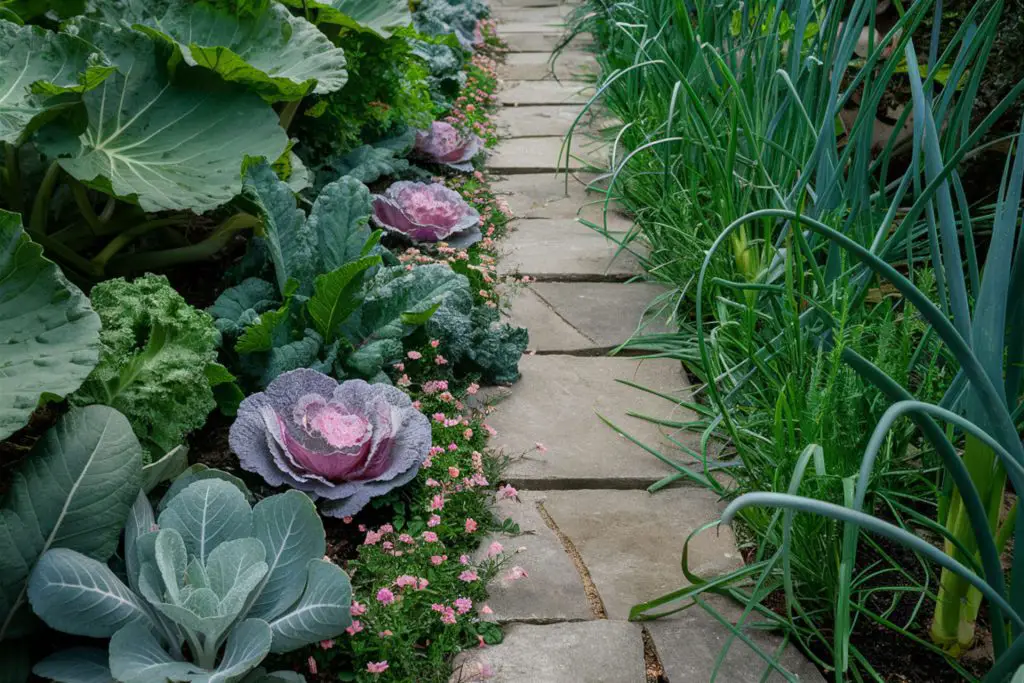
When we apply the practice of foodscaping to your gardens, we’re not just growing edibles – we’re crafting an experience. Thematic foodscaping takes this concept to the next level by incorporating narrative, history, and whimsy into your garden design.
Whether you’re inspired by ancient cultures, mythical creatures, or fantastical worlds, thematic foodscaping invites you to weave a story through your landscape, making every harvest a chapter in your own epic tale. It helps to understand the historical roots of foodscaping, as well as appreciating modern techniques such as using vertical gardens so that you can turn your plot into a haven for pollinators and a feast for the eyes.
Historical Inspiration: Uncovering the Roots of Foodscaping
It is important acknowledge the rich history that has led us to this innovative approach. From ancient civilizations to modern times, people have been incorporating edibles into their landscapes, often blending functionality with aesthetics. Let’s take a journey through time and uncover the historical inspirations that have shaped the art of foodscaping.
Roman Kitchen Gardens
In ancient Rome, kitchen gardens, or horti, were an integral part of villa design. These gardens not only provided fresh produce for the family but also served as a status symbol, showcasing the owner’s wealth and sophistication1. Romans cultivated a variety of herbs, fruits, and vegetables, often arranged in ornamental patterns and surrounded by walking paths.
Aztec Chinampas
In Mesoamerica, the Aztecs developed a sophisticated system of floating gardens, known as chinampas. These artificial islands, built on Lake Xochimilco, supported a diverse range of crops, including maize, beans, and squash. Chinampas were not only productive but also visually stunning, with canals, walkways, and ornamental plants.2
Medieval Herb Gardens
During the Middle Ages, European monasteries and castles often featured herb gardens, which provided medicinal plants, flavorings, and fragrances. These gardens were designed to be both functional and beautiful, with neatly arranged beds, walking paths, and ornamental features like fountains and statues.
These historical examples demonstrate that the concept of foodscaping is not new, but rather a revival of ancient practices that combined beauty and bounty. By drawing inspiration from these historical precedents, we can create modern foodscapes that not only nourish our bodies but also delight our senses.
Vertical Garden Oasis: Turning Walls into Edible Havens
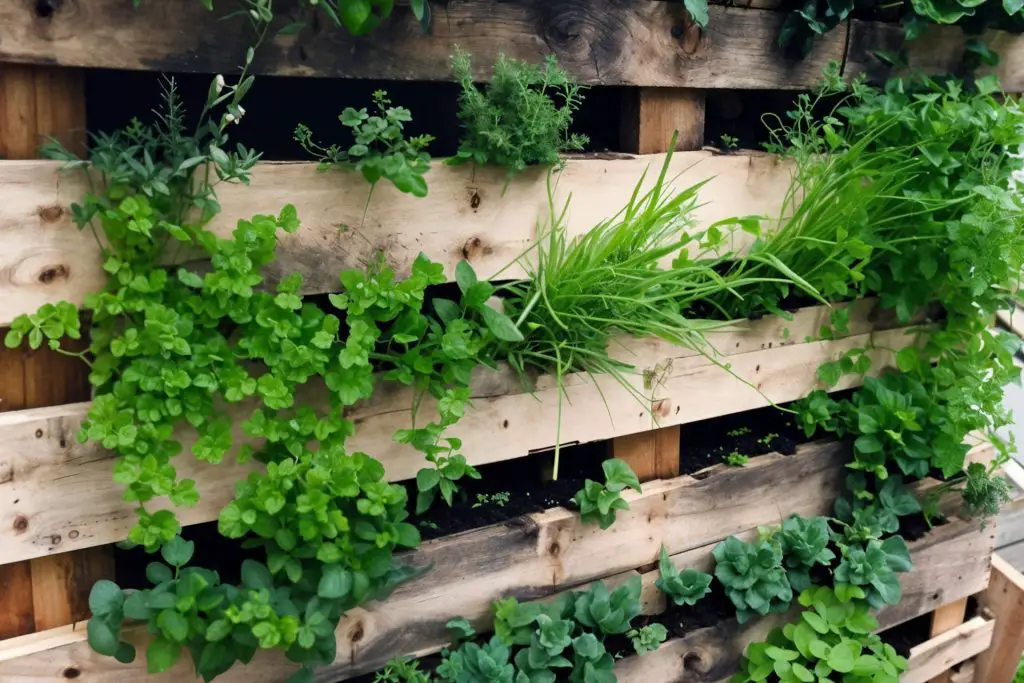
As urban spaces continue to shrink, vertical gardening has become a popular solution for those who live in towns, have small gardens, or only have limited access to growing spaces dwellers seeking to grow their own food. By utilizing walls, fences, and other vertical surfaces, you can create a thriving oasis that provides fresh produce, supports local wildlife, and adds beauty to your surroundings.
Choosing the Right Plants
When selecting plants for your vertical garden, consider varieties that thrive in partial shade, have compact growth habits, and can tolerate some neglect. Some excellent options include:
- Leafy greens (lettuce, kale, spinach)
- Cherry tomatoes and other compact fruits
- Herbs (basil, mint, cilantro)
- Flowering plants (nasturtiums, violas, pansies)
Construction Considerations
Before building your vertical garden, consider the following factors:
- Material selection: Choose durable, weather-resistant materials like wood, metal, or recycled plastic.
- Drainage: Ensure proper drainage to prevent waterlogged soil and root rot.
- Irrigation: Install a self-watering system or soaker hose to minimize maintenance.
- Weight capacity: Calculate the weight of the plants, soil, and water to ensure your structure can support the load.
Pocket Gardening
One popular method for creating a vertical garden is pocket gardening. This involves attaching small pockets or pouches to a wall or fence, which can be filled with soil and plants. Pocket gardens are perfect for small spaces and can be customized to fit your specific needs.
Living Walls
For a more extensive vertical garden, consider creating a living wall. This involves attaching a trellis or frame to a wall, which is then covered with a soil-less growing medium and plants. Living walls can be designed to fit any space, from small balconies to large buildings.
Overcoming Foodscaping Challenges: Turning Obstacles into Opportunities
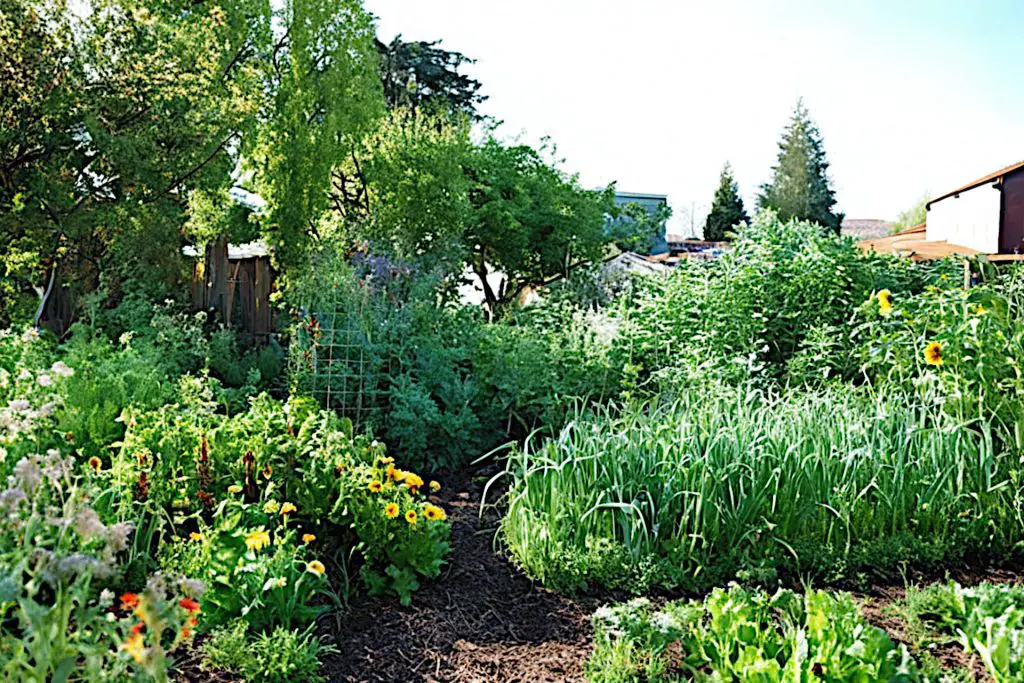
As you start to employ foodscaping ideas in your garden you’ll inevitably encounter challenges that may seem daunting. From shade-drenched gardens to compact containers, every obstacle presents an opportunity to think creatively and push the boundaries of traditional gardening.
There are several common hurdles that often need to be tackled, but with a few innovative solutions they can easily be overcome. Whether you’re struggling with limited sunlight, poor soil, or pesky pests, we’ll show you how to turn these challenges into opportunities to grow, experiment, and thrive.
Debunking the Myth: You Can Grow Edibles in Shade
One of the most common misconceptions about growing edibles is that they require direct sunlight to thrive. While it’s true that many vegetables and fruits need at least six hours of direct sunlight, there are plenty of delicious options that can flourish in partial shade or even full shade. In this section, we’ll explore the world of shade-tolerant edibles and provide tips on how to make the most of your sun-starved spaces.
Shade-Tolerant Vegetables
From leafy greens to root vegetables, there are many edible options that can thrive in partial shade. Some of our favorites include:
- Lettuce and other leafy greens: These can tolerate as little as 2-3 hours of direct sunlight per day.
- Spinach: This cool-season crop can grow in partial shade, making it perfect for spring and fall gardens.
- Radishes: Quick-growing radishes can thrive in as little as 1-2 hours of direct sunlight per day.
- Herbs: Many herbs, such as mint, parsley, and cilantro, can grow in partial shade, adding fresh flavor to your dishes.
Sample Planting Plan for a Shady Foodscape
Here’s a sample planting plan to get you started:
| Plant | Sun Requirements | Space |
|---|---|---|
| Lettuce | 2-3 hours | 4-6 inches |
| Spinach | 2-3 hours | 2-3 inches |
| Radishes | 1-2 hours | 2-3 inches |
| Mint | 1-2 hours | 6-8 inches |
Remember to adjust the spacing according to the mature size of each plant.
Tips for Growing Edibles in Shade
To maximize your shade-grown edibles, keep the following tips in mind:
- Choose the right soil: Select a well-draining potting mix specifically designed for shade-tolerant plants.
- Water wisely: Shade-grown plants may require less water, as they’re protected from intense sunlight.
- Fertilize lightly: Feed your plants with a balanced fertilizer, but avoid over-fertilizing, which can lead to weak growth.
Growing a Bounty of Fresh Flavors in Small Spaces
Container gardening is a fantastic way to grow edibles, even in the smallest of spaces. With a little creativity and the right techniques, you can turn any container into a thriving oasis of fresh flavors. In this section, we’ll explore the world of edible container gardening and provide tips on how to create a stunning and productive display.
Choosing the Right Container
When selecting a container for your edible garden, consider the following factors:
- Material: Choose a durable, weather-resistant material like ceramic, terra cotta, or recycled plastic.
- Size: Select a container that is at least 5-7 gallons to provide enough room for soil and roots.
- Drainage: Ensure your container has proper drainage holes to prevent waterlogged soil.
Edible Container Combinations
Here are some inspiring edible container combinations to get you started:
- Herb Garden: Combine basil, mint, cilantro, and parsley in a small to medium-sized container.
- Tomato and Basil: Pair cherry tomatoes with fragrant basil in a large container.
- Leafy Greens: Grow a mix of lettuce, kale, and spinach in a shallow container.
- Fruit and Flower: Combine strawberries or blueberries with nasturtiums or violas for a colorful and productive display.
Tips for Successful Edible Container Gardening
To ensure a thriving edible container garden, remember:
- Soil selection: Use a high-quality potting mix specifically designed for containers.
- Water wisely: Water when the top 1-2 inches of soil feels dry to the touch.
- Fertilize regularly: Feed your plants with a balanced fertilizer, following the manufacturer’s instructions.
- Prune and train: Prune plants regularly to promote healthy growth and train vining plants like tomatoes and peas.
Spicy Up Your Foodscape: Unleashing the Flavor and Beauty of Uncommon Edibles
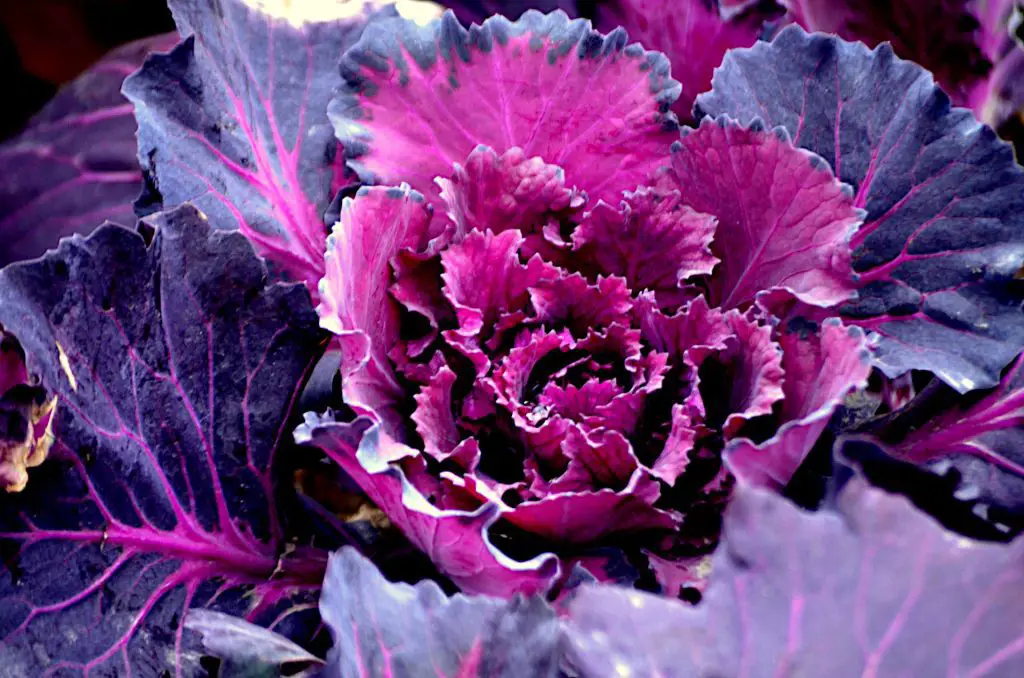
When you begin foodscaping, you may find yourself drawn to the familiar flavors of tomatoes, basil, and lettuce. But what about the thrill of discovery, the excitement of trying something new and unexpected? In this section, we’ll delve into the realm of uncommon edibles, where unusual flavors, textures, and aromas await. From the spicy kick of exotic peppers to the subtle sweetness of heirloom fruits, we’ll explore the world of gourmet ingredients that will elevate your foodscaping game and tantalize your taste buds.
Gourmet Greens at Home
Foodscaping allow gourmet greens to no longer be the exclusive domain of high-end restaurants and specialty grocery stores. With a little creativity and experimentation, you can grow a diverse array of uncommon edible greens in your own backyard or even on a windowsill. In this section, we’ll explore the world of gourmet greens, from peppery arugula to delicate purslane, and provide tips on how to cultivate these flavorful and nutritious additions to your foodscape.
Uncommon Edible Greens to Try
- Arugula: Known for its peppery flavor and delicate texture, arugula is a popular gourmet green.
- Purslane: This succulent green has a tangy, slightly sour taste and a crunchy texture.
- Sorrel: With its bright, citrusy flavor, sorrel adds a burst of freshness to salads and soups.
- Land Cress: Also known as American cress, this peppery green is a great addition to salads and sandwiches.
Growing Gourmet Greens at Home
To grow gourmet greens at home, follow these simple tips:
- Choose a location: Most gourmet greens prefer partial shade and well-draining soil.
- Sow seeds thinly: Sow seeds thinly and evenly, about 1-2 inches apart.
- Water consistently: Keep the soil consistently moist, but not waterlogged.
- Harvest regularly: Harvest gourmet greens regularly to encourage new growth and prevent bolting.
Recipes and Ideas for Gourmet Greens
Here are a few inspiring recipes and ideas to get you started:
- Arugula and Prosciutto Salad: Combine peppery arugula with crispy prosciutto, shaved parmesan, and a light vinaigrette.
- Purslane and Feta Stuffed Chicken: Mix purslane with crumbled feta, lemon zest, and chopped fresh herbs, then stuff into chicken breasts for a flavorful main dish.
- Sorrel and Leek Soup: Blend cooked sorrel, leeks, and chicken or vegetable broth for a refreshing and revitalizing soup.
Beauty Meets Bounty: Where Aesthetics and Edibility Unite
So far we have focused on the edible aspect of our gardens, forgetting that beauty and bounty can coexist in perfect harmony. However, the real value of foodscaping comes when combining the bounty with beauty. Edibles, can possess vibrant colors, intricate textures, and tantalizing aromas that can come together to create a feast for the senses. From flowering kale to fragrant herbs, you can use edible ornamentals to elevate your foodscape to new heights of beauty and productivity.
Edible Ornamentals
Here are some edible ornamental plants that will add beauty and bounty to your foodscape:
- Flowering Kale: With its vibrant colors and delicate petals, flowering kale is a stunning addition to any foodscape.
- Ornamental Peppers: From sweet bell peppers to spicy hot peppers, these colorful fruits add a pop of color to your landscape.
- Fruiting Shrubs: Dwarf fruiting shrubs like blueberries, raspberries, and blackberries provide a bounty of fresh fruit and add structure to your foodscape.
Designing a Beautiful Foodscape
To create a stunning foodscape, follow these design principles:
- Color: Combine plants with varying colors, textures, and forms to create visual interest.
- Texture: Mix plants with different leaf shapes, sizes, and textures to add depth and complexity.
- Form: Balance tall plants with shorter ones, and incorporate structures like trellises and arbors to add height and interest.
Tips for a Thriving Foodscape
To ensure your foodscape thrives, remember:
- Soil preparation: Prepare your soil with organic matter and nutrients to support healthy plant growth.
- Water wisely: Water plants regularly, but avoid overwatering, which can lead to disease and pests.
- Mulch and compost: Mulch around plants to retain moisture and suppress weeds, and compost regularly to maintain soil health.
Final Thoughts: Embracing the Future of Food and Gardening
As we conclude our journey through the world of foodscaping, we hope you’re inspired to transform your outdoor space into a vibrant, productive, and beautiful oasis. By embracing foodscaping, you’ll not only enjoy the freshest, most flavorful ingredients right in your own backyard, but you’ll also:
- Enhance your mental and physical well-being through connection with nature
- Reduce your carbon footprint and support local, sustainable food systems
- Foster a sense of community and connection with like-minded individuals
As you embark on your foodscaping adventure, remember to unleash your creativity and have fun! Experiment with new edible varieties, design innovative garden layouts, and share your experiences with others.
For further exploration and inspiration, we recommend:
- Visiting online resources like Gardening Know How, The Spruce, and Foodscaping.org
- Reading books like “The New Seed Starter’s Handbook” by Nancy Bubel and “The Vegetable Gardener’s Bible” by Edward C. Smith
- Joining local foodscaping clubs, gardening groups, or online forums to connect with fellow enthusiasts
Remember, foodscaping is a way of gardening that is always in transition as you learn, adapt and experiment with new ideas. Embracing this innovative approach to gardening, will enable you to not only cultivate a bounty of fresh, delicious ingredients but also nurture a deeper connection with the natural world and your c
Interview: Tonya, Local Foodscaping Expert
Name: Tonya
Location: Pennsylvania
Specialization: Edible landscaping with a focus on vertical gardening
Experience: 5 years
“Every plant in my garden tells a story, from the tiny sprouts that peek through the soil to the towering beans climbing skyward. It’s not just about growing food; it’s about cultivating life and learning from the rhythms of nature.”
Tonya
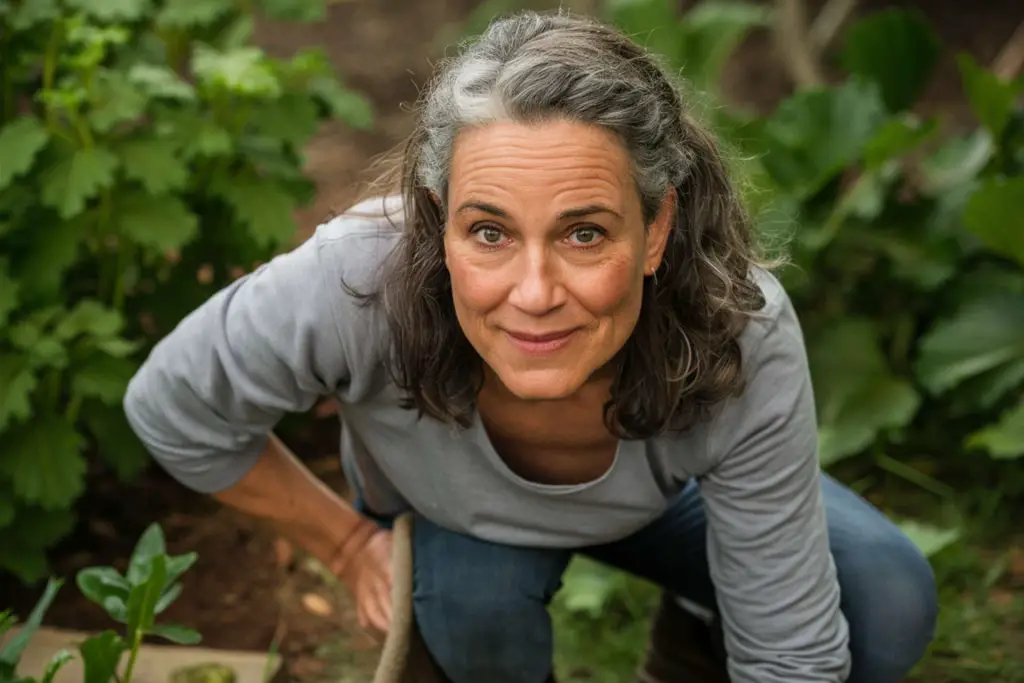
Gardening Techniques
Tonya utilizes vertical gardening to maximize her limited space. This method not only increases yield per square foot but also adds a unique visual element to her garden. She uses a variety of structures, including trellises, green walls, and tower gardens, which allow her to grow upwards instead of outwards.
Crops
In spring, Tonya’s garden bursts with the tender greens of spinach, kale, and arugula, thriving in the cooler temperatures. Summer ushers in a vibrant array of tomatoes, peppers, and climbing beans that scale her carefully placed trellises. Autumn is celebrated with a robust harvest of root vegetables like carrots and beets, alongside late-season chard.
Innovative Practices
Tonya has experimented with companion planting to enhance plant health and deter pests naturally. For instance, her tomatoes are planted alongside basil, which helps to repel harmful insects while also enhancing the flavor of the tomatoes.
Successes and Challenges
One of Tonya’s notable successes is her perennial herb garden, which provides a continuous supply of fresh herbs like thyme, rosemary, and mint. These herbs thrive year-round and offer fresh flavors just a few steps from her kitchen.
However, challenges arise with the unpredictable weather in Pennsylvania. Early frosts and summer droughts have occasionally thwarted her plans. Tonya’s commitment to organic gardening also means she faces ongoing battles with pests, though she counters these with natural solutions like neem oil and beneficial insects.
Community Engagement
Tonya shares her knowledge and passion by hosting monthly workshops on vertical gardening and sustainable practices in Brentwood. These workshops not only help spread the concept of foodscaping but also foster a community of like-minded garden enthusiasts.
Future Plans
Looking ahead, Tonya plans to expand her garden with more native fruit-bearing plants and explore aquaponics, integrating fish farming with plant cultivation to create a more sustainable ecosystem.
Tonya’s garden is not just a space for growing food; it is a testament to the blend of beauty and functionality, inspiring others in Brentwood to view their own yards as potential sources of both sustenance and sanctuary.
